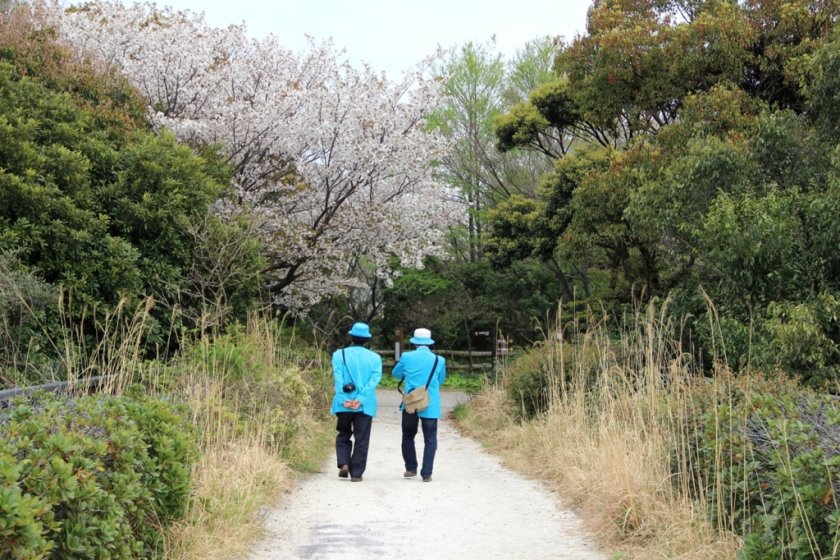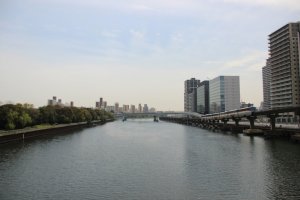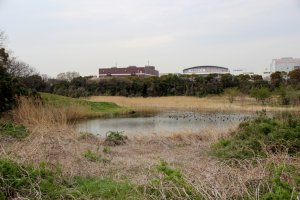Ronald, a fashion design student who has been living in Tokyo for 4 years, recommended that I visit Tokyo’s port to feel the hard-working spirit of Tokyoites. I thus decided to go and explore Ôi’s huge Container Terminal.
We have all heard that Tokyo is a city of possibilities and contradictions. But, heading to Ôi, I had not imagined finding such a diverse atmosphere in a harbor area. See for yourself: on this unique island, rare birds fly with airplanes, zoologists brave a truck jungle to find their favorite species, and cherry trees bend over thousands of containers. Why such an impetuous urbanism, you ask? You may guess my answer: That’s Tokyo.
Meet bird lovers in Ôi port’s hidden wild paradise
Its intriguing name made me first head to the Tokyo Port Wild Bird Park. Arriving in Ryutsu Center monorail station, nothing suggests that a bird–or even a tree–could live in such a polluted environment. However, walk along the lengthy line of trucks on your right, and after a bridge, a dense forest will appear next to the road. There is no sign, but the gate is 150 meters away.
For ¥300 you will have access to the two parts of the park. The larger portion offers a calm lakeside where you can meet passionate ornithologists looking for the rarest birds. Of course, I’m not talking about colorful toucans or speaking parrots, as the park is dedicated to regional wild birds, but there are over 180 different species, from the most common sparrow to the Chinese pond heron–listed as “accidental“, living in the area. If you have time, you can even try to find them all and fill in the English checklist given out at the entrance. (As a start, why not try to beat my valiant score of six different birds found?). In addition, the situation of the park allows visitors to watch airplanes landing at Haneda airport, and on Sundays the park organizes ludic activities to discover the regional wildlife and plants.
Looking for an unusual cherry blossom walk?
If you feel adventurous, don’t leave the island immediately after your visit of the park and follow me along the container terminal. First of all, head to the Port Shop to sustain yourself: at the park exit, go right and walk about 1km until you reach a triangular crossing. Then, cross on your left and follow the road. The shop is on the right, around 400 meters away. Despite its suggestive name, bottled water and sushi bento were the only sea-related items I found. These did help me make it to the end of the walk, though, whereas a bikini made of shells would have been of little use.
When you are ready to go, turn left at the shop exit and walk until you reach the container terminal. Then, follow the terminal on the left and admire the unexpected mix of cherry blossoms, trucks and transporters spread over kilometers. After a one-hour walk, the road turns left and leaves you at Shinagawa Seaside station.
Having seen the mega-structure of Ôi port, I can’t help asking myself how many workers and what huge machines were necessary to produce, deliver and receive this shrimp I’m about to eat or that hair-dryer I just bought. Having walked along an infinite line of waiting trucks, I can say with certainty that Ôi Container Terminal is an important part of Tokyo’s reality. As are, in their field, the natural ponds and tiny frogs of Tokyo Port’s Wild Bird Park. As Ronald wrote, “The real Tokyo is in the combinations the city creates.”
Where is the real Tokyo for you? Share your thoughts in the comments!


































